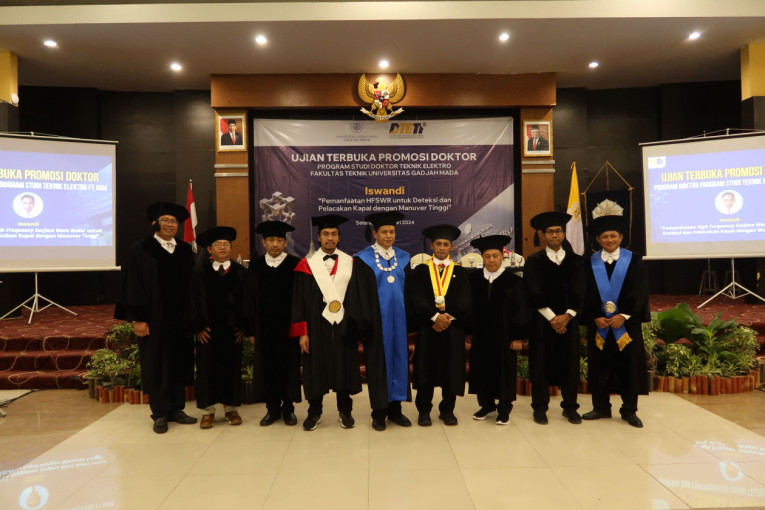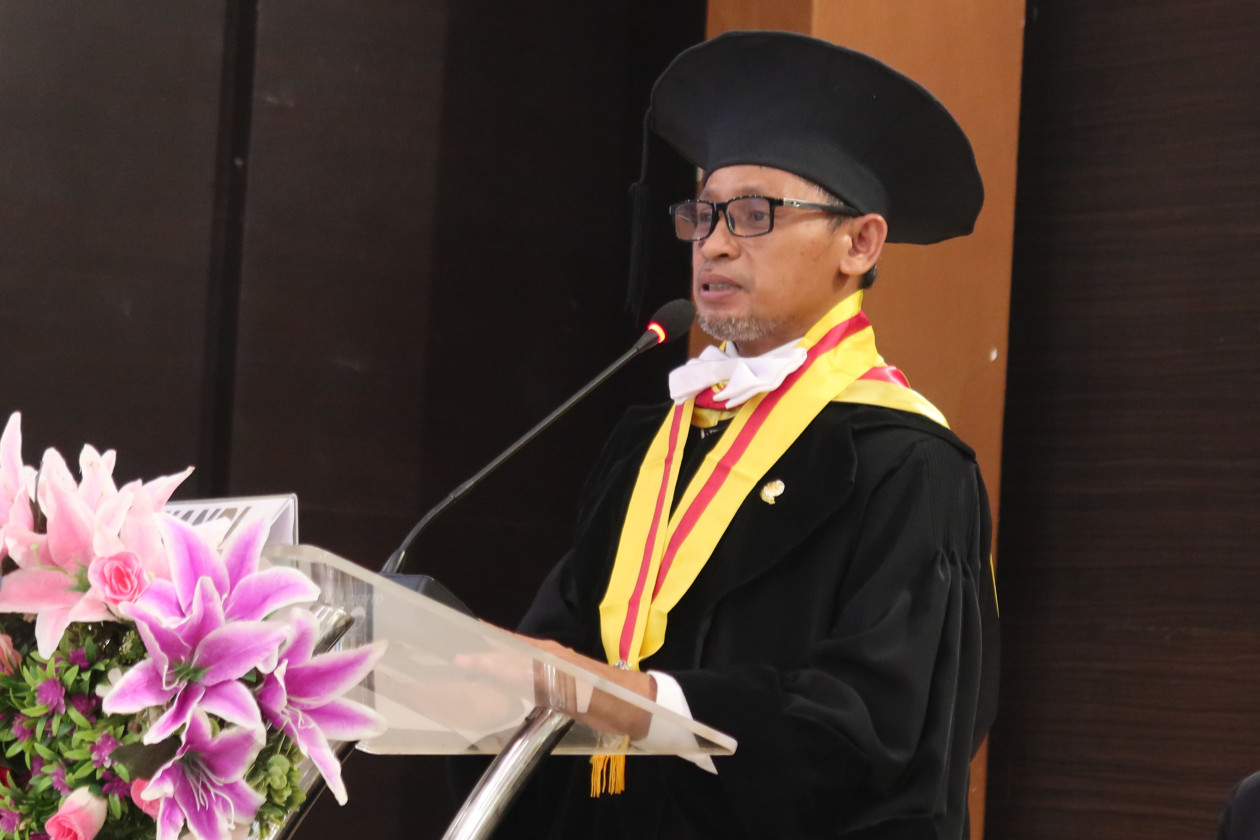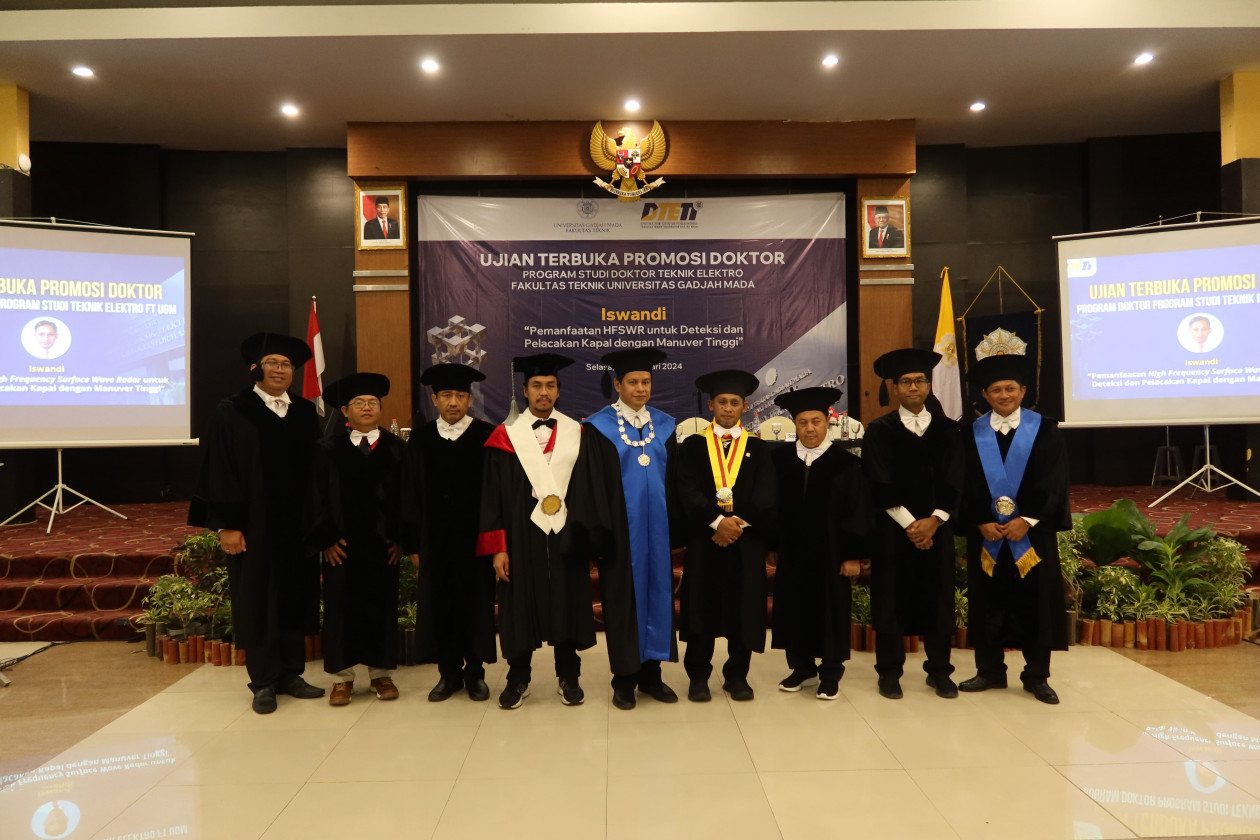In maritime nations, where vast expanses of water define national borders, Indonesia recognizes the imperative of a robust naval surveillance system to monitor ship activities vigilantly.
In a proactive stride towards fortifying national security, resilience, and integrity, Dr. Iswandi, an Electrical Engineering lecturer at UGM, delved into research on applying High-Frequency Surface Wave Radar (HFSWR) for ship detection and tracking.
Beyond developing radar signal modeling techniques, Dr. Iswandi also devised testing methodologies tailored for ship tracking algorithms on HFSWR, explicitly focusing on vessels with high maneuverability.
Presenting his findings during the public defense of the Electrical Engineering Doctoral Program on Tuesday (Feb. 20), Dr. Iswandi elucidated the potential of HFSWR as a pivotal technology for maritime surveillance.
He emphasized its expansive coverage, extending up to the exclusive economic zone boundary and its real-time functionality.
“HFSWR is well-suited for maritime surveillance due to its broad coverage and real-time capabilities,” the new doctor expounded.
In his dissertation defense before the examination committee, the 48-year-old Kulon Progo native underscored the challenges of implementing HFSWR for ship monitoring.
Notably, the technology contends with relatively low spatial and temporal resolutions, presenting complexities in tracking highly maneuverable vessels.
In response, Dr. Iswandi proposed the development of precise testing devices and methodologies tailored for assessing ship tracking algorithms in dynamic maritime scenarios.
The crux of his contribution lies in creating a comprehensive mathematical model for HFSWR, encompassing three primary components: input signals, radar signal processing system, and target detection.
The input signals include ship reflection signals, sea clutter, and noise. This meticulously constructed model generates data as a demonstrative tool for understanding the ship detection and tracking processes.
Dr. Iswandi’s research culminated in the formulation of an HFSWR signal model featuring notable contributions and innovations, notably utilizing the MMG model to generate radar data for highly maneuverable ships.
“The research has successfully developed a method for analyzing the performance of ship tracking algorithms on HFSWR by considering the movements of high maneuvering ships and compensating for radial error variations,” Dr. Iswandi elucidated.
This scholarly endeavor earned him an A for his dissertation, with a highly satisfactory predicate and an outstanding cumulative grade point average (CGPA) of 4.0.
The research findings have further made their mark in the academic realm, having been published in the international journal titled “An Evaluation Method of Ship Tracking Algorithms for High-Frequency Surface Wave Radar Considering High Maneuvers Generated by the MMG Model,” featured in the Journal of Engineering in 2023.
Author: Gloria





